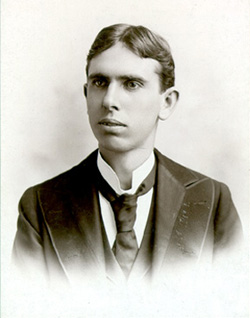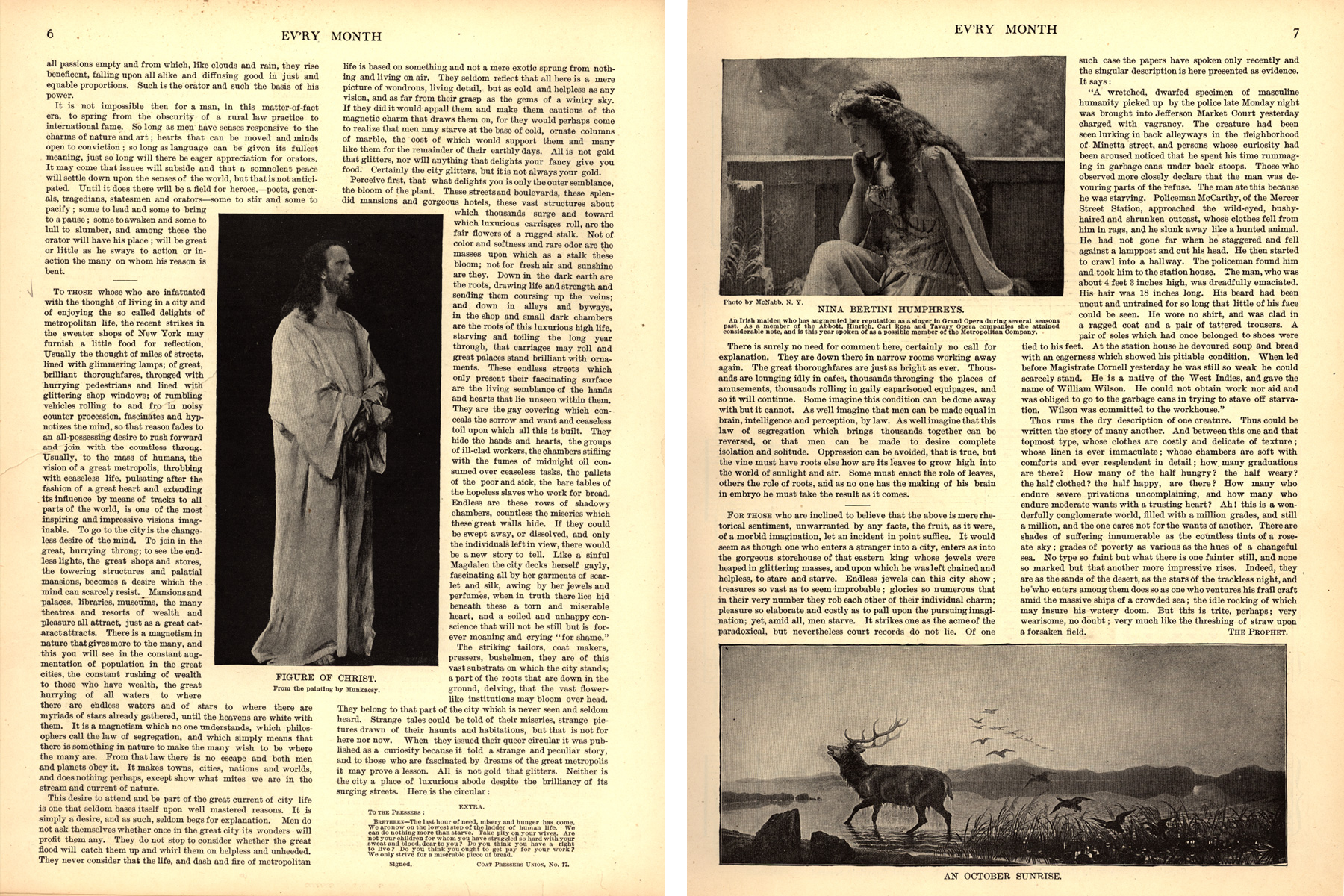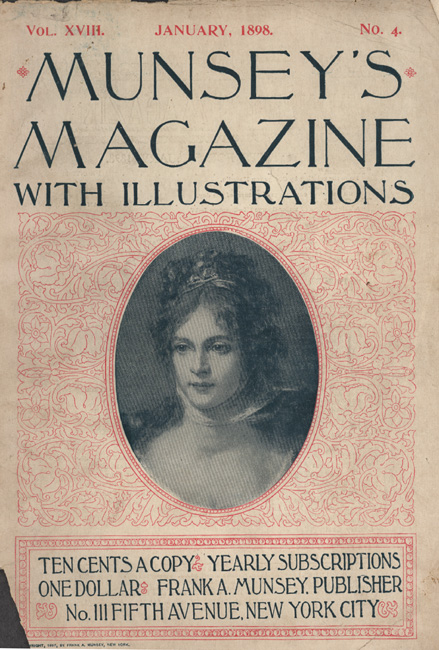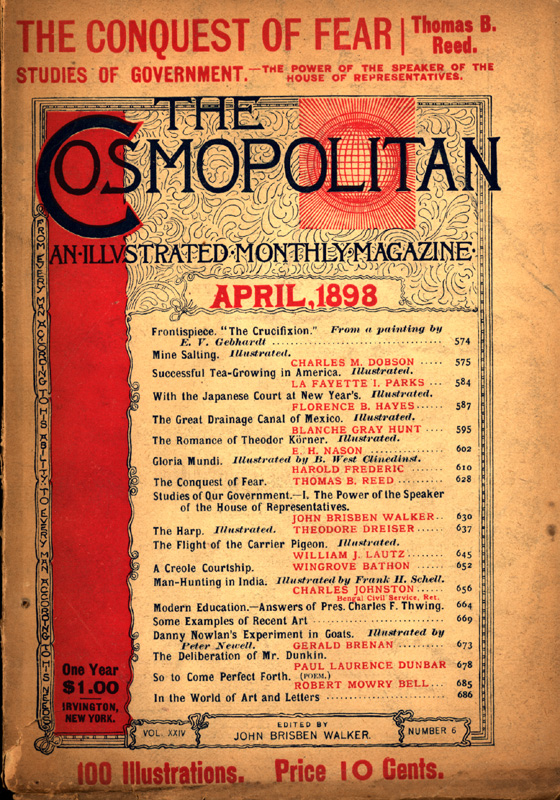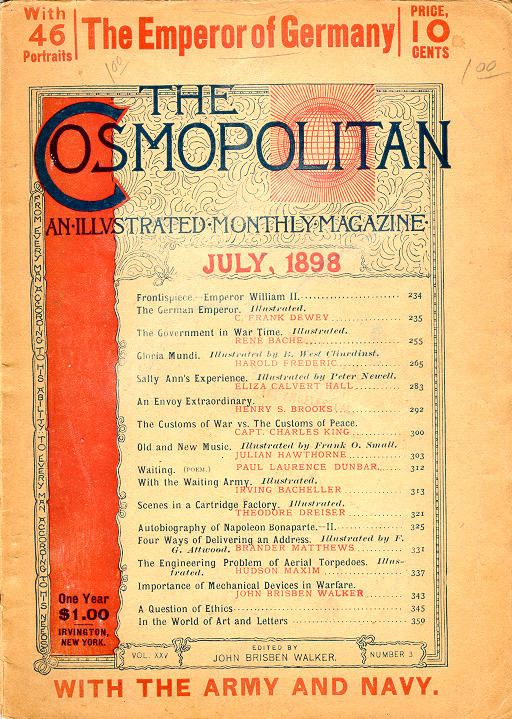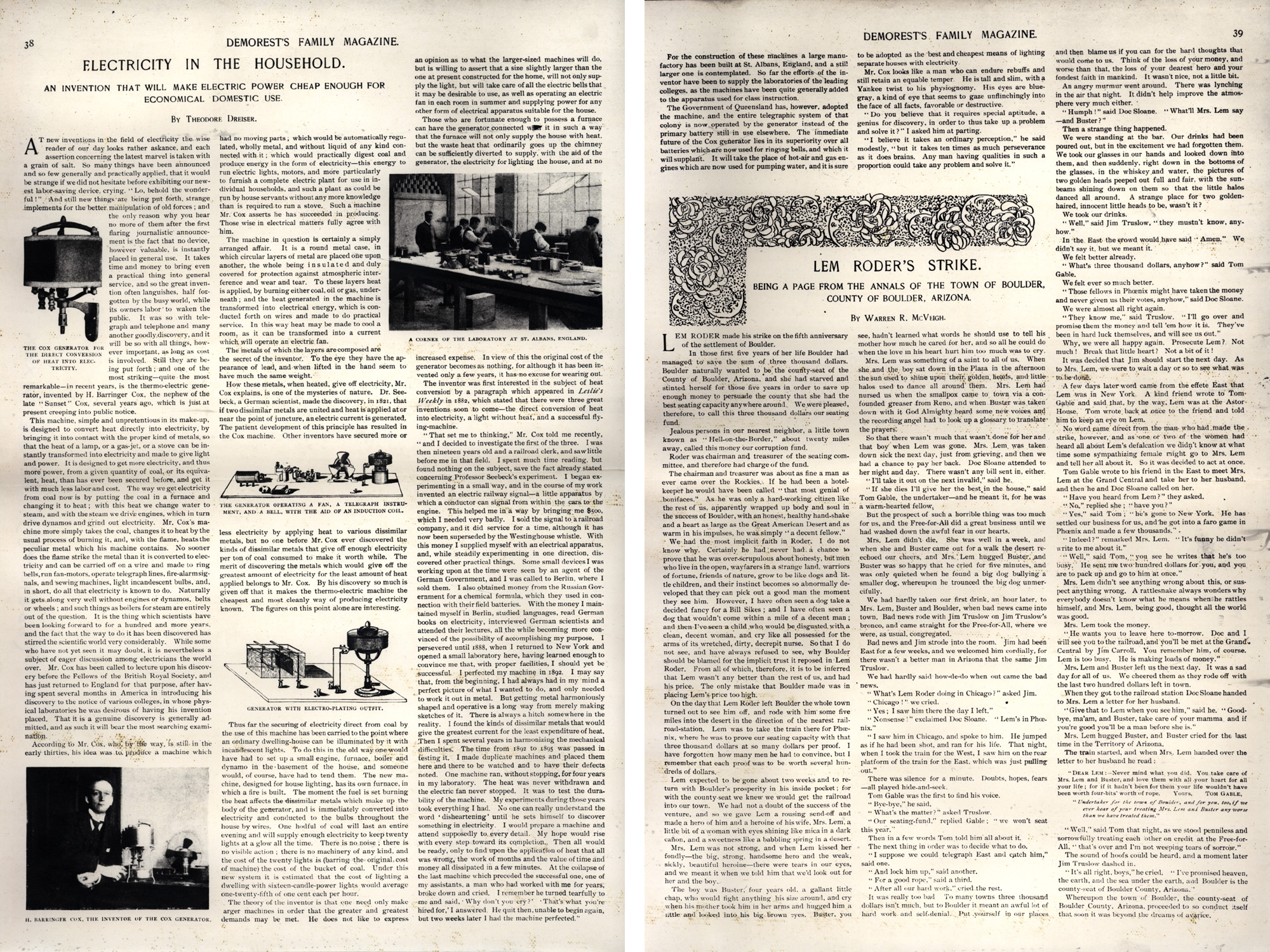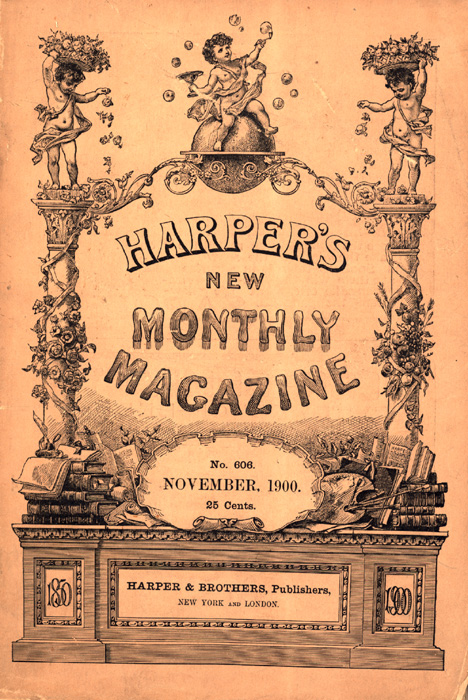Before publishing his first novel, Dreiser's apprenticeship in writing comprised a menagerie of short-term assignments and positions with newspapers and magazines from St. Louis to New York. His first reporter's job came in 1892 with the Chicago Daily Globe, considered one of the weakest of the Chicago papers at the time. But the Globe's less-than-premiere status afforded the inexperienced writer the opportunity to prove himself. He parlayed his few months of work at the Chicago Daily Globe into a position at the St. Louis Globe-Democrat, a morning Republican paper that was the biggest in town. At one point Dreiser was assigned the "hotel beat," which meant interviewing visiting celebrities. After returning to the city room one night, having just interviewed the theosophist Annie Besant, he was called away to cover a triple murder. Still dressed in his rented evening clothes, Dreiser arrived at the scene of the crime to find the bloody corpses of a mother and her two children who had been brutally murdered by her husband, the children's father. This dichotomy between wealth and poverty, between appearance and reality, between prospects and hopelessness informs Sister Carrie.
The life of the newspaperman in Dreiser's time was itself filled with poverty, lasciviousness, and corruption, as were many of the events that a reporter covered. At first naïve, Dreiser quickly learned the ropes and the realities of urban America, but invariably his ideals or vision or personal pride created rifts between himself and management. Freedom--or what appeared to be freedom--to write works to his own plan drove Dreiser not only to seek the editorship at Ev'ry Month but also to pursue creative writing, such as poetry. After departing Ev'ry Monthin September 1897, Dreiser wrote scores of articles for all manner of publications, always hoping that he could find a measure of financial freedom to write his first novel. Among these works came material that would latter be incorporated into Sister Carrie, which he began in earnest in the fall of 1899.
Fig. 1: Taken at the time when Dreiser was shuttling among various city papers from Chicago to St. Louis to Pittsburgh to Toledo
Fig. 2: As editor of Ev'ry Month, Dreiser was able to write a column entitled "Reflections," allowing him to expound on current events. The article for the October 1896 issue contrasts the onerous existence of New York's "have-nots" with the city's opulence as experienced by the "haves." It is signed "THE PROPHET."
Fig. 3: The subject matter for this article at least pertained to an American writer--the Pennsylvania-born poet and novelist Bayard Taylor, who died in 1878.
Fig. 4: From munitions to music, no subject was beyond Dreiser's reach as he sought to make a living as a journalist.
Fig. 5: The illustrated monthly Cosmopolitan published several articles by Dreiser in the late 1890s. This one concerns a munitions factory in Bridgeport, Connecticut, that produces special cartridges used by the United States Army and Navy in ordinary rifles.
Fig. 6: Photostat of Dreiser's article on the invention of a thermo-electric generator by H. Barringer Cox
Fig. 7: This article reviews the astonishing statistics surrounding the growth of the fruit industry in the United States. Dreiser concludes by praising the resources and potential inherent yet still unfulfilled in America. "For every ray of sunshine used in perfecting bloom and fruitage, ten thousand left to pass! Man shall perfect himself in the wisdom of these things, and there shall no longer be a cry for food."
